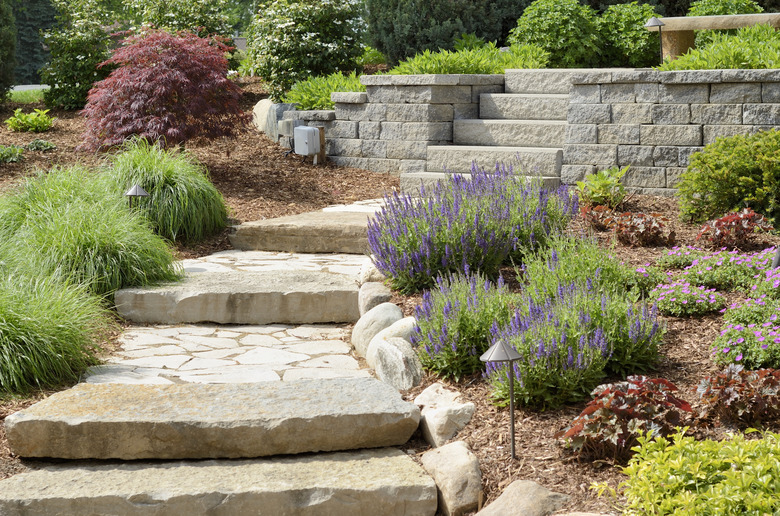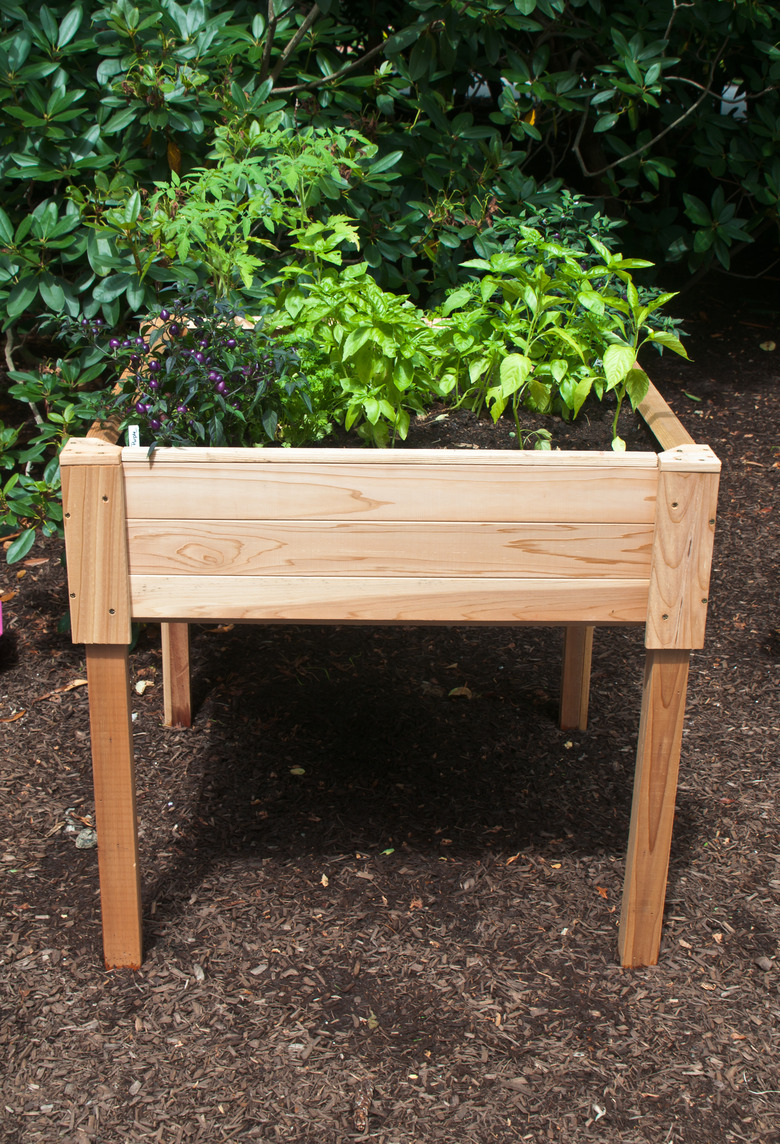Low-Maintenance Landscaping Ideas
While gardening can be a relaxing and rewarding activity, even the most avid gardeners are always on the lookout for ways to cut down on some of the routine chores. Here are some tips to help bypass some of the busy work.
Grow the Right Plants
Grow the Right Plants
Once they are planted, trees and shrub generally require less work than flowering plants. But while they are great for starting a landscape, shrubs alone populating a yard can be pretty dull. A garden needs flowering plants. When choosing plants with an eye toward easy maintenance, opt for perennials—the type of plants that return year after year—rather than annuals, which die out at the end of the growing season and must be replanted each year. Perennials require some work, such as cutting back and dividing, but once they are established you don't have to start over every spring by planting anew.
When choosing plants look for native varieties. These varieties are naturally acclimated to the soil and weather conditions of your area, so they tend to be hardier than other plants. And native species require less attention because they are usually more resistant to local plant pests than are plants from other regions.
Don't think everything at your local garden center is a native plant. In fact, you may have to search for native plants. Like other businesses, garden centers stock and sell what has been popular in the past, and that may not include native plants. Better garden centers, though, very often dedicate a section of the lot to native species. The American Horticultural Society has a listing of native plant societies throughout the country. The societies can provide local sources for native plants.
Use Mulch
Use Mulch
Once you have removed any weeds, spread three or four inches of mulch in flower beds and around shrubs and trees. Mulch provides a number of benefits for the garden, but one of the most important is that it suppresses weeds. It also prevents moisture from evaporating from the soil, so you don't need to water as much.
Use an organic mulch like shredded wood or wood chips. The material can add some nutrients to the soil, and it provides an attractive covering. You can use the mulch by itself or apply it over a landscape fabric that keeps weeds from growing and lets water through to the soil. Keep the mulch a few inches away from the stems of plants to allow for air circulation and prevent fungal and insect problems.
Feed the Soil
Feed the Soil
Get in the habit of applying compost to the garden every spring and fall, if possible. Compost is decomposed organic matter. You can make your own from grass clippings and shredded leaves and from kitchen scrap, but don't include meat or pet foods. You can also buy compost in large bags or in bulk at garden centers or home improvement stores
When properly decomposed, compost adds a nutrient infusion to the soil, taking the place of fertilizers you apply throughout the year. Compost also aerates the soil, allowing water and air to circulate more freely. A garden that receives regular compost is a garden that needs less attention
Cut Back on the Lawn
Cut Back on the Lawn
Because of the cutting and feeding, lawns usually require more attention than the average perennial border. You can reduce the lawn area by creating more spaces for shrubs and perennials. You can also replace sections of lawn with a low-growing (and low-maintenance) ground cover. Ground covers spread quickly and once established, they require almost no work except for cutting them back when they overgrow their borders.
To make mowing easier, install mower borders around flower beds and other plantings. Mower borders separate the lawn from the planting bed. A mower borer typically consists of pavers laid so that they rest about one inch above the lawn. Simply guide one side of your mower over the pavers, and you will cut the grass and trim around the flower beds in one step.
Using a mulching mower lets you leave the clippings behind, eliminating the need to rake or bag the clippings. The clippings will decompose and feed the lawn's soil. Experts say that allowing grass clipping to decompose on the lawn over the course of a summer can take the place of an entire fertilizer application.
Install a Watering System
Install a Watering System
Rather than lug hoses and sprinklers around the yard at watering time, install either soaker hoses or a drip irrigation system. Soaker hoses are rubber hoses that contain tiny holes that supply dribbles of water to the base of the plant. Drip irrigation systems are similar, except they use small watering feed tubes to which you attach tiny emitters where you want them. Both types are available in kits that hook up to an outside faucet or hose bibb.
Once you run the hoses, you can cover them with mulch and leave them in place. Not only do the systems supply water to the base and roots of the plants, they reduce evaporation significantly, saving water. You can hook them up to a timer, further reducing your watering chores.
Use Raised Beds
Use Raised Beds
Vegetable gardeners who use raised beds can increase the size of the harvest and cut down on work. One of the trends in raised bed vegetable gardening is intensive planting, where vegetables are planted close together. The closeness of plants shades the soil, cutting down on weed growth.
Depending on the raised bed design and its height, you can eliminate stooping and bending to tend to the garden. Some even have a ledge so that you can sit while working. Adding a number of raised beds provides another way to cut down on the lawn area. Create aisles between the beds using crushed stone. Make them wide enough to wheel garden equipment between the beds.
Whether gardening is your passion or just another weekend set of chores, finding ways to make the drudge work easier can make it more enjoyable for everyone.

